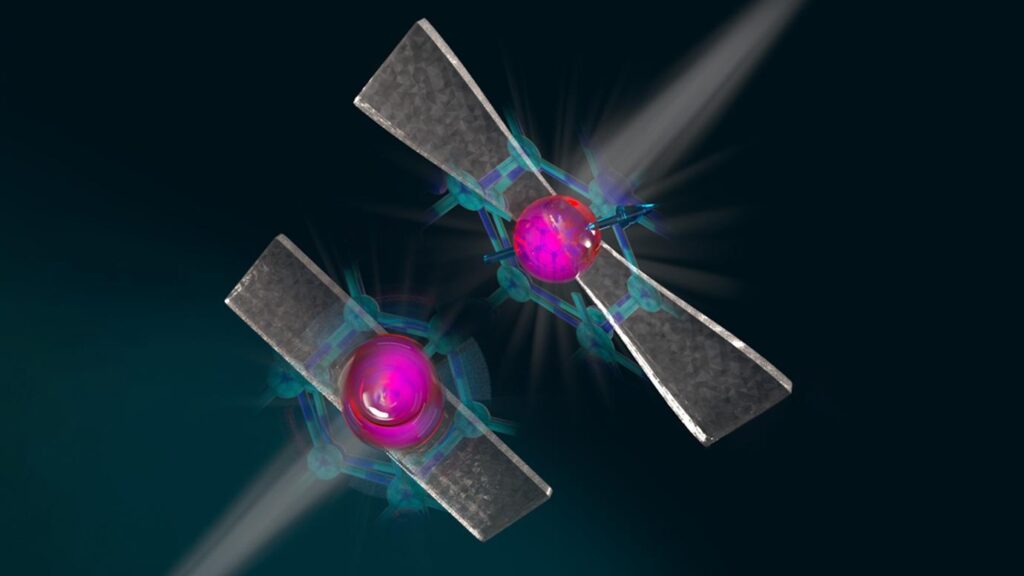Researchers are claiming a breakthrough in quantum communications, thanks to a new diamond-stretching technique they say greatly increases the temperatures at which qubits remain entangled, while also making them microwave-controllable. Quantum networking is an emerging field that uses weird quantum phenomena to send and receive information. These networks will be impossible to hack, and will use quantum entanglement to cover large distances, creating pairs of qubits which mirror each other’s quantum state without any physical connection.
Diamond-based qubits are capable of maintaining their state of entanglement for a decent length of time – but only provided they’re kept incredibly cold – just a hair above absolute zero. That limits their usefulness, because it’d mean you’d need a giant, energy-intensive cooling apparatus at every node of your quantum network. But researchers from the University of Chicago, Argonne National Laboratory and Cambridge University say they’ve found a breakthrough solution, by literally stretching the diamond to alter its molecular lattice.
The team laid a thin film of diamond over hot glass. As the glass cools, it shrinks – but it shrinks less than the diamond, applying a stretching force at the molecular level. The change in the diamond’s structure is “infinitesimal,” according to the research team, but the effect is dramatic.
The temperature at which these stretched-diamond qubits remain entangled rose from just above absolute zero to 4 Kelvin (-452 °F, -269 °C). That’s still very cold, clearly, but it’s much, much easier to achieve 4 Kelvin than less than 1 Kelvin. The equipment involved is much cheaper and more compact.
“It’s an order of magnitude difference in infrastructure and operating cost,” said Alex High, assistant professor with the Pritzker School of Molecular Engineering, whose team led the study. “This technique lets you dramatically raise the operating temperature of these systems, to the point where it’s much less resource-intensive to operate them. ” “Most qubits today require a special fridge the size of a room and a team of highly trained people to run it,” said High, “so if you’re picturing an industrial quantum network where you’d have to build one every five or 10 kilometers [3 or 6 miles], now you’re talking about quite a bit of infrastructure and labor.
” The stretched diamond structures also reduced noise and increased the fidelity of information moving through the system up to 99%, because these qubits can be controlled using microwaves, as opposed to previous versions which required light in the optical spectrum, introducing a fair bit of error. “Usually if a system has a longer coherence lifetime, it’s because it’s good at ‘ignoring’ outside interference – which means it is harder to control, because it’s resisting that interference,” said Ph. D student Xinghan Guo, first author on the paper.
“It’s very exciting that by making a very fundamental innovation with materials science, we were able to bridge this dilemma. ” “With the combination of prolonged coherent time and feasible quantum control via microwaves, the path to developing diamond-based devices for quantum networks is clear for tin vacancy centers,” added Mete Atature, professor of physics at Cambridge and a co-author on the study. The paper is available in the journal Source:.
From: newatlas
URL: https://newatlas.com/quantum-computing/diamond-stretching-qubits/
